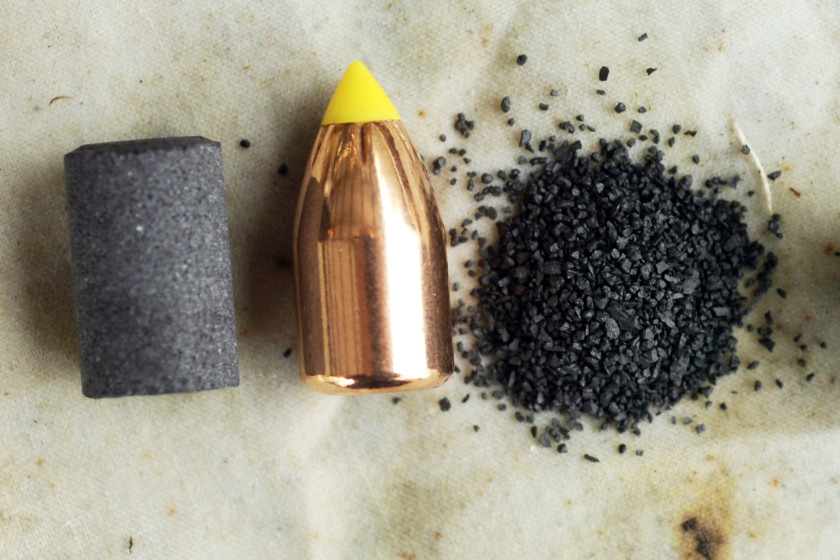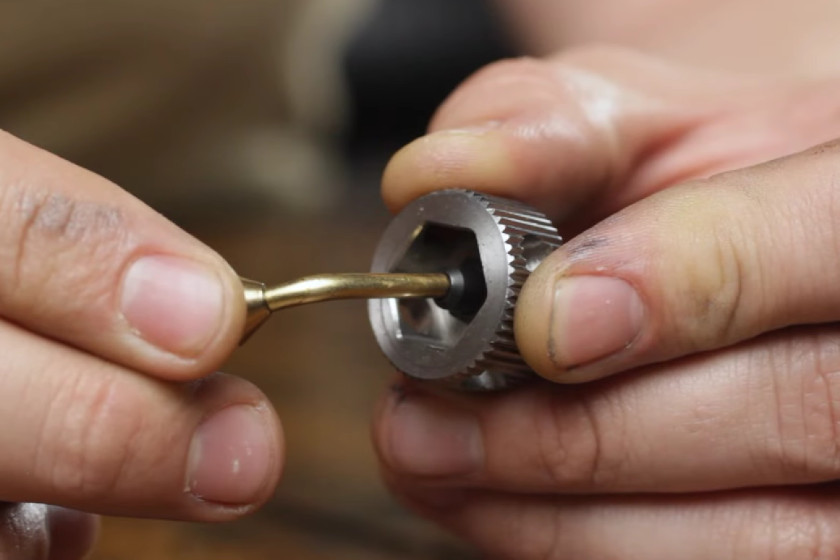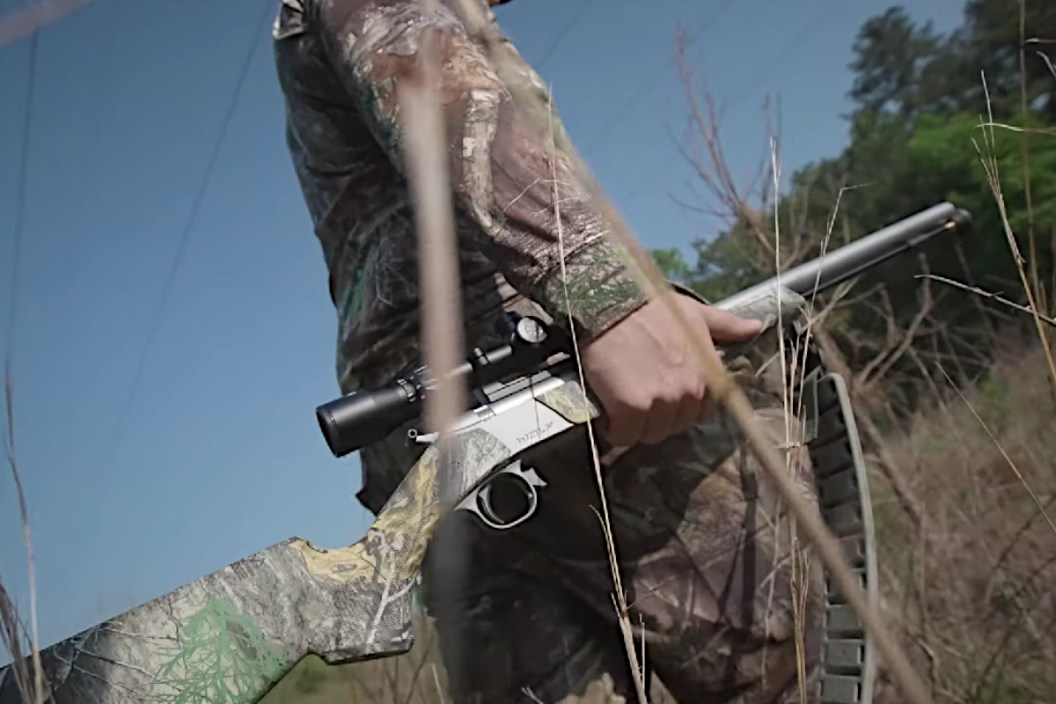Almost every state has a muzzleloader-only season these days, and more hunters than ever are picking up a blackpowder smoke pole in hopes of extending their season. For those who just can't get into archery season, muzzleloader is probably the second-best thing. The seasons are usually generous, and many deer have slipped back into their normal routines after the pressure of regular firearms season has worn off.
Black powder guns are also cheaper to shoot, both because of the price of the firearm and the lower cost of ammunition. Speaking of ammo, blackpowder is one of the better ways to get around shortages since the bullets and powder are almost always available. And today's modern muzzleloading projectiles have come a long way since the simple wad and round ball loads your father or grandfather used in their guns. Let's go over some of the basics of what you need to get started extending your hunting time starting this season.
Modern Black Powder Rifles

Star Tribune via Getty Images
There's a bevy of black powder firearms out there. However, unless your state mandates the use of old-school muskets and black powder pistols only, we highly recommend starting out with an inline muzzleloading rifle. The modern guns have better barrels, more reliable ignition systems, and can use modern scopes and optics, which makes them much more reliable. From an accessibility standpoint, an inline is an easier jump to make if you already have experience with rifles or shotguns than jumping to an old-school flintlock or black powder revolver. Here are some quick recommendations for modern muzzleloader rifles that are great for beginners.
Knight Vision Freedom
The Knight name has been synonymous with quality inline muzzleloaders for decades now. The Vision Freedom is their most affordable option at $400 and is a great option for anyone just starting out. This rifle weighs just seven pounds, nine ounces, and has a 24-inch, alloy hand crafted Nitride barrel with a 1:28 twist rate. It has a black composite stock and an aluminum ramrod that will handle the elements on a wet hunt quite nicely. It also comes fitted with adjustable metallic fiber optics. This rifle uses a full plastic jacket and bare primer ignition system that's going to be ultra-reliable. The break action this rifle easy for beginners to operate, but it also makes it easier to clean, which is a vital part of any muzzleloader. (More on that later.)
CVA Accura
We put the CVA Accura on this list for a few reasons, but the main one is ease of use. This is a perfect option for beginners because CVA includes a quick release breech plug that can be removed simply by unscrewing it with your fingers. This gives the Accura a huge leg up over the competitors who require a separate tool. It matters because it makes reloading and cleaning much faster and easier than other firearms. We also like the fact that CVA uses high quality Bergara rifle barrels for these firearms. They are available in 25, 27, and 28-inch lengths, and the barrels are Nitride-treated stainless steel. They are a great option for deer hunters in northern climates that deal with a lot of rain or snow. The other big reason to go with an Accura is because these guns are available practically everywhere for a rather affordable $600 price point. We also appreciate the wide range of stock configurations and camo patterns they're available in. CVA also sells these in combos that include a scope and sling. Just buy some cleaning supplies and some ammo, primer, and powder, and you're ready to get to the range and then start hunting.
Thompson / Center Pro Hunter

The Thompson/Center encore is the most expensive firearm on this list at $800, but it is also the most accurate and reliable of the bunch. This .50 caliber muzzleloader features a stainless steel finish on the barrel and receiver that helps it stand up to the elements. The hammer makes the firearm ambidextrous and easy to operate for hunters of all skill levels. This is the option for anyone who wants versatility. Simply because the Encore line allows you to remove two screws and change out the barrel completely. You can use this as a muzzleloader one day, a shotgun or rifle the next. The Encore is the ideal option for a multi-season and multi species hunter who wants to do it all with one gun. It was a T/C Encore that produced the single heaviest blood trail I've ever seen on a Michigan 7-pointer I shot at 100 yards back in 2002. The bullet blew clean through both lungs, and it looked like someone ran through the woods throwing buckets of red paint on everything. There was even some orange froth mixed in to the red trail that I assume was from the lungs. How that buck made it a hundred yards, I'll never know, but it reinforced the effectiveness of the Encore for me forever.
Powder, Bullets, and Primers

Portland Press Herald via Getty Images
Normally, all these components are self-contained in a rifle cartridge or shotgun shell. With black powder, you're buying them all separately and pushing them directly down the barrel of your firearm. It is vital you buy the correct powder for your weapon: for a long gun, you want FG or FFG black powder, or a powder substitute that is marked "Rifle Shotgun (RS)."
Read the instructions on both the powder of your choice and your firearm respectively to make sure they're compatible with one another. Most modern muzzleloaders cannot use smokeless powder because they built from an entirely different compound. In fact, smokeless powder may explode if loaded in many modern inline guns, so make sure you're using the right stuff before you squeeze that trigger!
Speaking of which, most shooters don't even use authentic black powder anymore. Simply because it is one of the messiest substances you can ever shoot with a firearm, and you'll go through a ton of cleaning solvent and patches cleaning up afterwards. Fortunately, manufacturers have gotten very good at making powders that burn more efficiently and cleaner than the old-school stuff. Pyrodex pellets are a great option that simplifies things greatly. Each pellet is a set number of grains, so if you want a 100-grain load, you simply drop two 50-grain pellets down the barrel and you're ready for your bullet. Quick, easy, and no messy measuring tools to hassle with. These pellets also are a great deal easier for fast follow-ups in the field.
If you do want to use powder, I've had some good success using Hodgdon Triple 7 blackpowder. Go with the easy clean version, and it burns up more efficiently and will make less of a mess in the long run. IMR White Hot pellets are a great choice of clean burning powder too, and will help cut your cleaning time in half.
For a beginner, we recommend Hornady Low-Drag Sabots for superior accuracy as well as easy loading with Hornady's unique polymer casing technology. I've had good success with T/C Shock Wave bullets on whitetails. And I haven't used them personally, but I know many others who have had great success using simple hollow point PowerBelt bullets too. You will also need an ignition source: 209 primers, or shotshell primers, are recommended. I've had some good success using Winchester #209 777 primers in the past. Again, make sure you're getting primers built specifically for muzzleloading.
Other Items You'll Need

Star Tribune via Getty Images
If you're already experienced with firearms, you won't be surprised to learn there's a ton of other items you'll need to purchase to compliment your new gun. Because you're loading all the components separately, muzzleloaders require a few more gadgets than standard firearms. They also require many more cleaning supplies. That powder is messy, and it gets almost everywhere, so you'll want to buy more patches and solvents than you might normally use.
General Muzzleloading Supplies
- Powder flask and powder measure: used to measure and dispense powder
- Bullet starter: used to start a bullet down the bore when it fits too tightly for the rod included with your muzzleloader
- Bullet puller: used for removing bullets if they're stuck, if you forgot to put a powder charge in, or if you decide you don't want to fire a round you've already loaded
- Capper: used for priming your firearm
- Nipple pick: helps ensure that your 209 primers work effectively
- Breach plug grease: ensures easy disassembly when it comes time to clean your rifle
Cleaning Supplies
- Patches
- Lubricant
- 12.9mm bore brush (if you went with the .50 cal)
- Swab
- Solvent
With muzzleloading cleaning supplies, it's usually best to buy more than you think you'll need. Especially if you're totally new to muzzleloaders. I was shocked when I started at how dirty these firearms can be, and how much extra attention they needed after a day at the range. Allow yourself a little room for trial and error getting it right.
How to Shoot a Muzzleloader

YouTube: CVA Official
Loading and shooting a muzzleloader seems complicated, but it's much simpler than you might think. First, ensure the firearm is unloaded by poking the ramrod into the barrel and then dry firing a primer in a safe direction. Doing this helps clear out additional moisture unburned powder from the barrel too.
The process is slightly more complicated if you're using loose powder. For this style of shooting, determine what kind of load you want to shoot and set your loading flask accordingly. I recommend starting at 90 grains of powder and then working your way up from there. You might want to experiment with different loads to see which patterns best in your firearm. Pour the powder into the flask and then you can load the power into the muzzle end of the firearm. Tap the barrel lightly a few times to help the powder settle.
From there, you can add the bullet to the muzzle. At this point you can add some lubricant like T/C bore butter to the bullet to help it slide down the barrel faster and group better, but it's entirely optional. Use a bullet starter to get the bullet going down the barrel before switching to the ram rod. Don't let the name ram rod fool you, you don't really want to knock the tip of the bullet repeatedly. In fact, that could damage a bullet with a conical tip and hurt the accuracy. Instead, use steady pressure to push the bullet down the barrel in one motion. It's not a bad idea to mark your ram rod when the bullet is properly seated. That will help you ensure you seat the bullet the same way every time.
From there, simply add your primer and the firearm is ready to shoot. Don't forget to remove the spent primer after firing. It's not a bad idea to run a few patches down the barrel to clean it up between shots either.
With pellets the process is essentially the same. The only difference is there's no measuring involved. Simply drop in the number of pellets that correspond to the charge you want. Then seat the bullet over the pellets the same way you did the powder, add a primer and shoot. It's as simple as that.
Cleaning a Muzzleloader

YouTube: CVA Official
We need to discuss the cleaning of a muzzleloader because it's more vitally important than other forms of firearms. Depending on the type of powder used, the stuff can be quite corrosive and harmful to the barrel if you don't clean it immediately after shooting. It can sometimes be a messy job, but it's an essential part of owning and using a muzzleloader. There are many ways of approaching this type of gun cleaning, and it may take some trial and error to find what works best for your muzzleloader. I like to start by running a bore brush through the barrel to loosen up any caked-on black powder residue. From there, soak a patch in some solvent and run it through the barrel.
From there you have some options. You can keep running patches until they come out clean, or you can remove the breech and then run some cleaning foam through the barrel. Let it sit and work, then run some patches through it to remove what's left. Consider using a gel-style solvent if you're running a patch through after every shot. Again, it's up to each individual shooter. Be careful not to get powder in the threads for the breech plug. It's a real pain to clean those threads out. Trust me, I know from experience.
Be sure to remove the breech plug and clean it thoroughly. Some hunters like to soak it in a cleaning solution before drying and replacing it. Whatever you do, don't forget to put some anti-seize lubricant on the threads before screwing it back in place, especially at the end of the season. Otherwise, you may not be able to remove it the next time you go to unscrew it. Don't forget to use the nipple pick to scrape excess carbon and powder build-up from the breech and flash hole. Uncleaned build-up can damage your breech and potentially cause misfires down the road.
Finally, don't forget to use an anti-rusting agent on the components of the firearm. Blackpowder guns are significantly more sensitive to moisture and rusting issues than standard firearms. A little bit of extra effort goes a long way towards preserving the integrity of your muzzleloader. Properly cared for, a good muzzleloader will give you years of late season enjoyment and will help you fill the freezer whenever you fail to get it done during the regular seasons.
For more outdoor content from Travis Smola, be sure to follow him on Twitter and Instagram For original videos, check out his Geocaching and Outdoors with Travis YouTube channels.
READ MORE: BEST LONG RANGE MUZZLELOADERS FOR HUNTERS AVAILABLE TODAY






